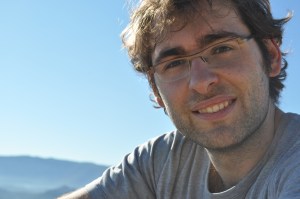Read the full article for free* in Classical and Quantum Gravity:
Covariant constraints on hole-ograhpy
Netta Engelhardt and Sebastian Fischetti 2015 Class. Quantum Grav. 32 195021
arXiv:1507.00354
*until 28/10/15
Spacetime reconstruction in holography is limited in the presence of strong gravity.

Netta Engelhardt (left) and Sebastian Fischetti (right) practicing some of their less-developed skills at UCSB. Netta is a graduate student at UCSB. Sebastian was a graduate student at UCSB at the time of writing, and is now a postdoc at Imperial College London.
In recent years, it has become clear that there is a deep connection between quantum entanglement and geometry. This mysterious connection has the potential to provide profound insights into the inner workings of a complete theory of quantum gravity. Many concrete hints for how geometry and entanglement are related come from the so-called AdS/CFT duality conjectured by J.Maldacena, which relates certain types of quantum field theories (the “boundary”) to string theory on a negatively-curved spacetime called anti-de Sitter (AdS) space (the “bulk”) of one higher dimension. In a certain limit, the string theory is Continue reading





You must be logged in to post a comment.